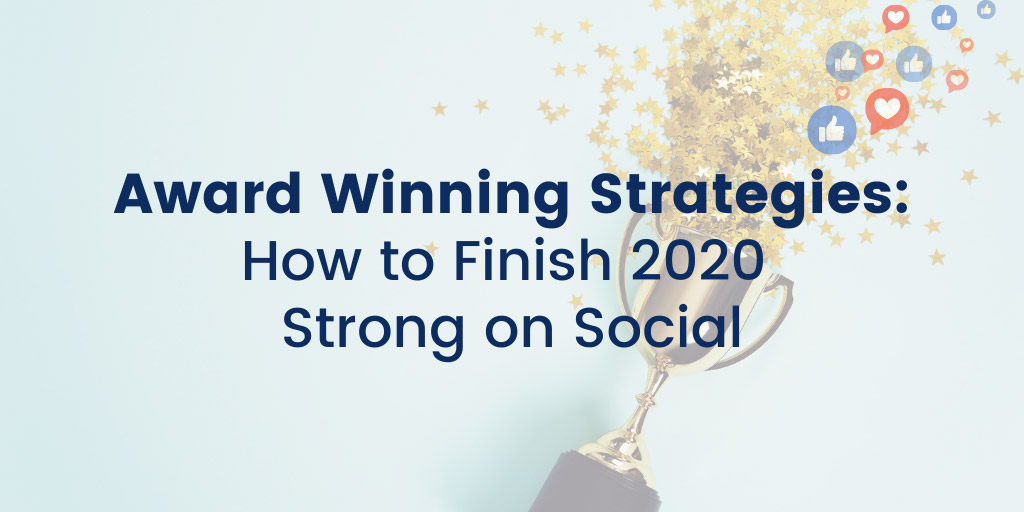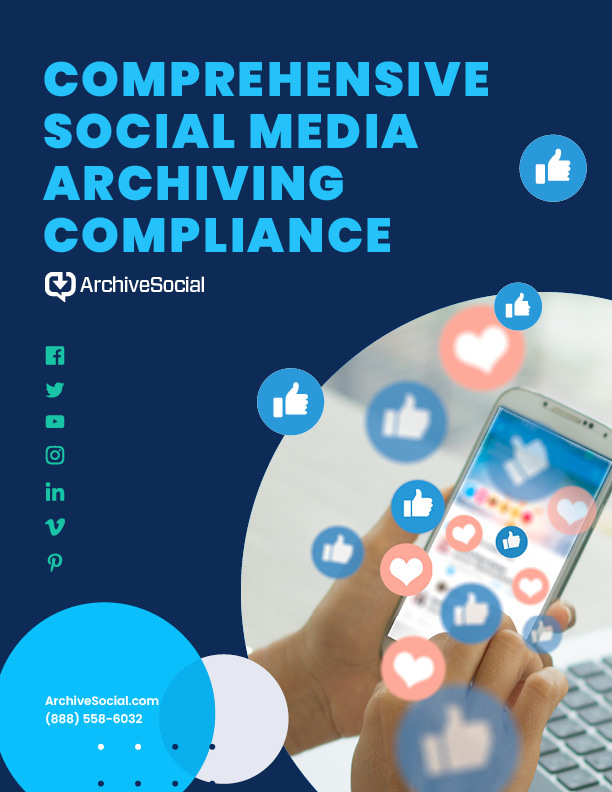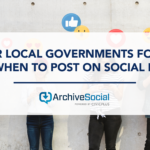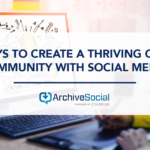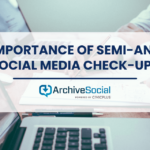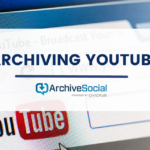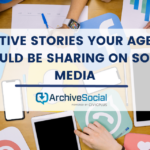In our most recent webinar, “Award Winning Strategies: How to Finish 2020 Strong on Social”, we sat down with four of this year’s golden post award winners to discover their secrets to social media success. We discussed new opportunities to connect with key audiences, the elements behind a captivating post, and expert advice for tackling crisis communications with Dana Berchman, chief digital officer of Gilbert, AZ; Daniel Vargas, San Antonio Water Systems communications specialist; Kristen Waggener, communications and marketing manager of Bryan, TX; and Jasper Stenstrom, Graham Fire & Rescue, WA firefighter.
Best Live Video
Firefighter, EMT, and Communications Director for Graham Fire & Rescue, WA, Jasper Stenstrom, has been responsible for building the department brand. With 18 fire departments in their county, Stenstrom knew they had to do something to stand out in the social world. And with the average attention span being so short, he discovered his number one piece of advice, “Keep it weird”. Stenstrom said, “You have to capture them right away, and be different from other pages if you want to gain that reach.”
He discussed how important it is for the public to see their department as humans, and not just professional firefighters. So in order to do that in a way people could engage with, Stenstrom said, “We give our followers a chance to get that backstage pass every single day to see the behind the scenes to see what their firefighters are doing.” For Stenstrom and his team, that means going live quite a bit. “We specifically go live with our Fire Chief and make him very powerful,” said Stenstrom. “Also a big benefit of going live, the Facebook algorithm still currently loves live video,” added Stenstrom.
Stenstrom noted that when they do go live on their pages, he gives a basic outline to their Fire Chief or whoever is doing their live video, but lets them run their own live-stream and go whatever direction they feel necessary. “Going Live gives you that authentic human connection, and most of the time it’s really unscripted,” he said.
Stenstrom added that going live also allows you to interact with your audience in real-time, and you instantly gain credibility and become that subject-matter expert with whatever point you’re trying to get across. Most importantly, Stenstrom said, “you crush perfectionism.” He continued, “How many people that are listening out there haven’t shot a video because you’re having a bad hair day, didn’t wear the right outfit, or feel like the scripts are not ready? When you go live, none of that stuff matters – which is really kind of cool.”
Stenstrom acknowledged that you’re going to make mistakes, but that it’s okay, because going live allows you to be candid. He concluded with the five P’s for going live:
- Planning: what do you need for the video you’re trying to shoot
- Pre-Promotion:make sure you let your audience know you’re going to go live so you get live-viewers to tune in
- Production: starts when you press record, it’s game-on from there & you’re going to make mistakes
- Post-promotion: where the work starts. Not going to get a ton of people to tune in live, but a lot of people to tune in after the fact. Be sure to push that you were live after the fact
- Repurpose: Repurpose live videos and trim/cut to fit into a blog post, or on your YouTube channel – be sure to repurpose live videos, because people want to see you as humans
Social Media Team of the Year
Chief Digital Officer for Gilbert, AZ, Dana Berchman, took a modern approach when tackling Gilbert’s outreach strategy. “I wanted to create not just a traditional communication office, but a digital one, and use social media to connect with the audience,” said Berchman. Which was a big initiative from when she joined eight years ago when the mayor wasn’t even on Twitter.
Berchman and her team manage more than 30 channels across the organization, including the mayor’s social media channels, Police and Firefighter PIO’s, and all of the town channels. To gain the following Gilbert has now, Berchman offered advice to, “start very strategically, really look at your audience and what channels they are on, and then be willing to pivot to embrace new channels.” She continued “but also understand that this takes a lot of time to build the trust and relationships to have these two-way conversations.”
Berchman highlighted how social media is an opportunity to provide customer service around the clock. Because, “when your residents need something it’s often when you’re not working during business hours, it’s on the weekends, at night, or in a crisis,” said Berchman. She continued, “And you can’t just suddenly decide when a crisis arrives that you want to engage on social media, you have to already be there, so that when people need you and you need to get information to them, you have already built this two-way conversation, trust, and following.”
Berchman acknowledged that this is very nuanced work that requires people with particular skill sets to be able to manage the conversations, especially around hot topics in the political environment. People expect answers on social media. Something Berchman referred to as the “monster we’ve built in a sense,” that once you’re there and engaging, people really do expect to hear from you regularly. This is exactly what happened to Berchman and her team in the pandemic.
With a large engagement on their channels already established, between April and July of this year, the team saw more than 22M impressions across all of their channels and more than 1.4M engagements! To help put that in perspective, as these numbers are significantly high for a public city entity, prior to the pandemic Berchman’s team would see an average of 70 comments a day. Now, as of June, they are sometimes seeing an average of 600 comments per day that they have to manage.
Berchman expressed, “This takes a team. It’s not just a singular person. Our entire team has put some of their traditional roles aside to focus more on social media management especially during this time.” She highlighted the opportunity having this network provides, so that when you do need something from your residents, they’re already there.
Berchman provided best practices:
- Go where people are, meet them where they’re at – make it easy on them
- Be there to answer their questions and engage around the clock
- Get the right people with the right skills on the team to manage social media who are creative thinkers, understand its a 24/7 job and the complex issues you’re facing online
- Start small or with a channel that makes the most sense for who and where your audience is
Berchman stressed that “the world is changing, and government shouldn’t be an exception to the way the rest of the world operates, especially when it comes to social media. In fact, it should mirror it.” She concluded with a final piece of advice for listeners, “Don’t get in over your head if you can’t stay on top of it. Look at where your audience is and go to those channels.”
Best Facebook Presence
Senior Communications Specialist for San Antonio Water System, TX, Daniel Vargas, manages communication for the city-owned nonprofit organization that provides all the waste and water service to 8.1M people. He carries out their unique goal to not sell water, but get the community to actually use less water.
When he initially took over, Vargas learned a good lesson early on when responding to residents with questions or criticisms. Vargas said, “I was talking in PR speak that I had been used to doing, and one angry customer thought my responses were automated and I was a bot, and started sending vulgar messages one after the other. And I had to tell him I was a real person.” He continued, “That was actually a good lesson though, it taught me to be more authentic with our audience across our social media channels.”
Vargas discussed what he did to manage Facebook that has made it their fastest growing page of all. “ I honed in on our audiences, and directed content toward our biggest group which is 25-34 year olds,” he continued, “From there, what I did was take a step back, look at our Facebook page, and rethink what I wanted it to be.”
With a background in journalism, Vargas knew he wanted to use Facebook similar to the features or lifestyle sections in a newspaper, and position the page to be more feature, life-style oriented, that was “news you can use”. Vargas said the content needed to be, “timely, topical, easy to digest.” He continued, “but more importantly, the page needed to have a distinct voice that people knew. So if they saw content coming across their timeline, they knew it was going to be SAWS.”
To do this in a very entertaining way, Vargas shares overarching news stories and pulls blurbs, so that people don’t have to read the entire article but are left with intended nuggets of information he wanted. Vargas said he always tried to get those stories to come back to SAWS.
Vargas covered other best practices for managing Facebook, including:
- Customers expect immediacy. “Lines are blurred now post COVID-19, work wise they expect you to be on,” said Vargas. He encouraged others to have a dedicated time to try and turn it off.
- As your page evolves, never forget about the agency’s core mission or your mission. Vargas said, “I keep a list of eight criteria that published content needs to match at least one of to ensure I’m not going too far outside of the box.”
- Voice & consistency is one of the most successful parts. “Find out what those key times are and make sure that you’re working smarter not harder,” said Vargas
- Make sure that you’re posting content that’s educational, but entertaining. Vargas encouraged the use of visuals.
- Maximize the tools Facebook offers, like Facebook Premiere, including videos to cover photos or pages, 3-D photos, 360-degree photos. “We use Facebook Live for our breaking news,” said Vargas.
- A clear and polished social media policy needs to be posted to your page. “It sets expectations for your followers, fans, and sets the tone right away so that conversations do not get away from you,” said Vargas.
Vargas recommended to “dig down into your Facebook Analytics and see when your fans and followers are on, and try to target them during those times so that you maximize your reach.”
To touch on how the pandemic affected their communication strategy, Vargas explained that when the pandemic started, his team started running assurance campaigns so that customers knew that SAWS’s long-term ability to deliver services would not be impacted. “When people were going out and stocking up and hoarding water, we wanted to assure them that their water and waste services were not going to suffer,” said Vargas. He confirmed that COVID-19 will change the way SAWS does outreach, and what they’re doing now is returning to social media to do more videos.
Social Media Professional of the Year
Communications and Marketing Manager for City of Bryan, TX, Kristen Waggener discussed her philosophy with social media, stating that “Social media should really be a two-way communication tool and not just a bull horn.”
She commonly hears agencies asking if they can turn comments off, and that “higher-ups just want to put stuff out but don’t want people to be able to comment on their post.” She continued, “That’s really not how social media was set-up or how it’s supposed to function. And you’re really going to have a bad time if that’s how you see it,” said Waggener.
Waggener noted that a really important part of social media is getting feedback so you can understand what kind of information your audience wants and be able to give that to them in a way that makes sense for both you and them.
“A lot of times with that bull horn approach, you’re just pushing out that information,” she continued, “It’s important to spend a lot of time interacting with people on your pages, interacting with other pages, and sharing your community partners’ content, and your own, and doing all of that in equal amounts,” said Waggener.
In terms of pushing out content, Waggener follows a formula that’s a mix of information, entertainment, hard selling, and cheerleading.
- 60% Information: “This is what you want to put out and also what your audience is asking for, align both,” said Waggener.
- 20% entertainment: “While entertaining social media is very important, I am a firm believer that most of your content should have a purpose and shouldn’t just be to entertain,” explained Waggener.
- 10% hard-selling: “When you’re asking your audience to do a physical action, that’s hard to get done and people get really fatigued when you ask them to do things over and over. Be mindful when putting out content when asking to do something and giving them something in return,” reminded Waggener.
- 10% cheerleading: “Cheer about the great things your organization is doing but make sure it’s mixed in with all these other pieces. If all you’re doing is saying you’re great, but not listening to anything, then you’re not providing any value to them and they will tune you out and not see you as a valuable resource,” stressed Waggener.
Waggener went on to cover best practices for social media from her experience:
- Customer Service.“Social media at this point is really primarily a customer service platform.” She continued, “As consumers have come to expect from private brands’ immediate customer service on social media, since we’re on the same platforms, they have those same expectations for us.”
- Waggener expressed that agencies need to be prepared and able to provide great customer service on social media. “If someone came into your city hall or called your office, you wouldn’t ignore them or let them sit for hours and hours on end without acknowledging that they’ve asked you a question, and that really shouldn’t be different on social media,” said Waggener. She offered the simple tip to acknowledge you see their question and let them know you’re working on it.
- Consistency. “When you’re an agency with a lot of different accounts. You want to make sure the experience is the same across all the accounts,” said Waggener. She encouraged having social media policies and plans in place so that your audience gets that consistent message.
- Timely messages. “Nobody wants to wait just to be acknowledged that they’ve asked a question. Being able to respond and let them know you’re working on it goes a long way in terms of trust and building those relationships,” said Waggener.
Her final best practice is helpful information. “Marrying the two needs of you pushing information out and residents the information they actually want to get from you, and being sure that what you put out is actually helpful to your residents and not just checking a box,” concluded Waggener. Interested in more social media strategies? Check out these helpful resources:
Learn more about archiving & compliance laws, and your public record responsibilities!

